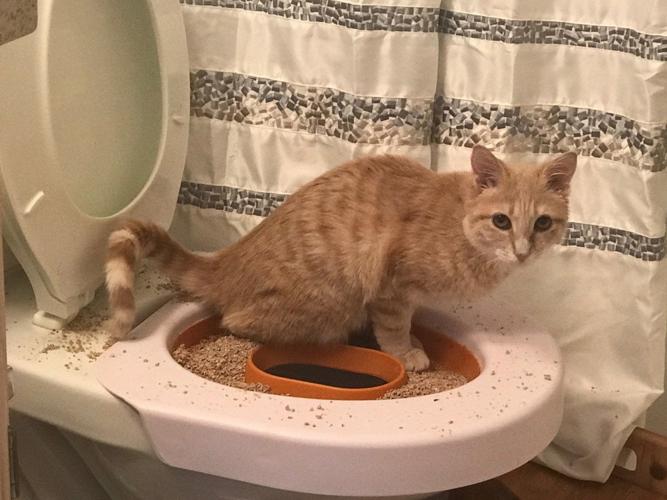The author is making a number of good observations related to Don’t flush cat feces down the toilet in general in this content which follows.

Intro
As cat owners, it's vital to be mindful of just how we take care of our feline good friends' waste. While it may appear convenient to purge feline poop down the toilet, this method can have harmful effects for both the setting and human wellness.
Environmental Impact
Flushing pet cat poop introduces harmful pathogens and bloodsuckers right into the supply of water, positioning a significant danger to water communities. These contaminants can adversely impact marine life and concession water top quality.
Health Risks
Along with environmental concerns, flushing cat waste can also pose wellness risks to humans. Pet cat feces may have Toxoplasma gondii, a parasite that can create toxoplasmosis-- a possibly severe health problem, particularly for pregnant females and people with damaged body immune systems.
Alternatives to Flushing
Thankfully, there are much safer and a lot more accountable ways to dispose of cat poop. Think about the following choices:
1. Scoop and Dispose in Trash
One of the most common method of disposing of pet cat poop is to scoop it right into a biodegradable bag and throw it in the trash. Make sure to make use of a specialized trash scoop and take care of the waste quickly.
2. Usage Biodegradable Litter
Select naturally degradable pet cat clutter made from products such as corn or wheat. These clutters are eco-friendly and can be securely gotten rid of in the trash.
3. Bury in the Yard
If you have a backyard, think about hiding cat waste in a marked area far from veggie gardens and water sources. Be sure to dig deep enough to stop contamination of groundwater.
4. Mount a Pet Waste Disposal System
Buy a family pet waste disposal system especially developed for feline waste. These systems use enzymes to break down the waste, reducing smell and environmental effect.
Conclusion
Liable family pet possession extends beyond offering food and sanctuary-- it also involves appropriate waste monitoring. By refraining from flushing pet cat poop down the toilet and opting for different disposal approaches, we can reduce our environmental impact and protect human health and wellness.
Why Can’t I Flush Cat Poop?
It Spreads a Parasite
Cats are frequently infected with a parasite called toxoplasma gondii. The parasite causes an infection called toxoplasmosis. It is usually harmless to cats. The parasite only uses cat poop as a host for its eggs. Otherwise, the cat’s immune system usually keeps the infection at low enough levels to maintain its own health. But it does not stop the develop of eggs. These eggs are tiny and surprisingly tough. They may survive for a year before they begin to grow. But that’s the problem.
Our wastewater system is not designed to deal with toxoplasmosis eggs. Instead, most eggs will flush from your toilet into sewers and wastewater management plants. After the sewage is treated for many other harmful things in it, it is typically released into local rivers, lakes, or oceans. Here, the toxoplasmosis eggs can find new hosts, including starfish, crabs, otters, and many other wildlife. For many, this is a significant risk to their health. Toxoplasmosis can also end up infecting water sources that are important for agriculture, which means our deer, pigs, and sheep can get infected too.
Is There Risk to Humans?
There can be a risk to human life from flushing cat poop down the toilet. If you do so, the parasites from your cat’s poop can end up in shellfish, game animals, or livestock. If this meat is then served raw or undercooked, the people who eat it can get sick.
In fact, according to the CDC, 40 million people in the United States are infected with toxoplasma gondii. They get it from exposure to infected seafood, or from some kind of cat poop contamination, like drinking from a stream that is contaminated or touching anything that has come into contact with cat poop. That includes just cleaning a cat litter box.
Most people who get infected with these parasites will not develop any symptoms. However, for pregnant women or for those with compromised immune systems, the parasite can cause severe health problems.
How to Handle Cat Poop
The best way to handle cat poop is actually to clean the box more often. The eggs that the parasite sheds will not become active until one to five days after the cat poops. That means that if you clean daily, you’re much less likely to come into direct contact with infectious eggs.
That said, always dispose of cat poop in the garbage and not down the toilet. Wash your hands before and after you clean the litter box, and bring the bag of poop right outside to your garbage bins.
https://trenchlesssolutionsusa.com/why-cant-i-flush-cat-poop/

I found that content on Can You Flush Cat Poop Down The Toilet? while surfing around the internet. Loved our blog entry? Please share it. Help others locate it. Thank you for taking the time to read it.
Click Here!